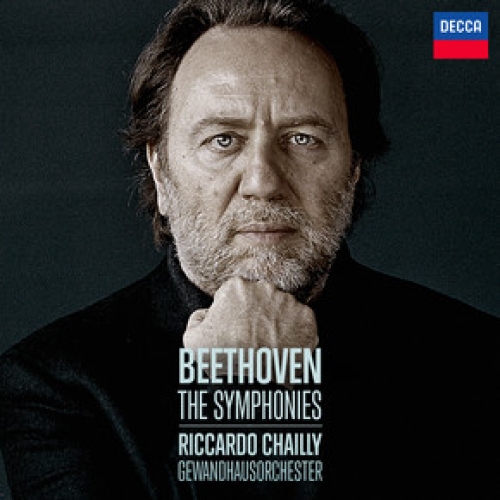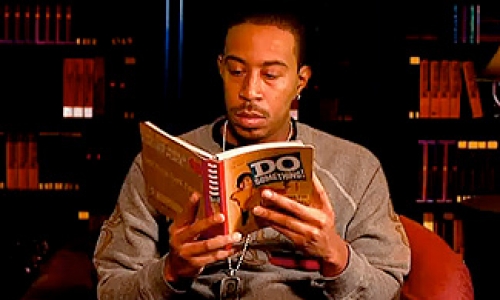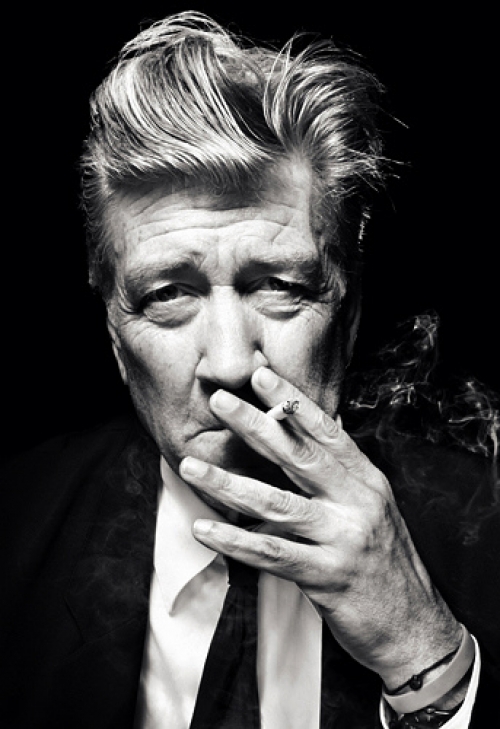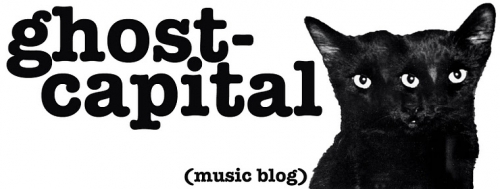There are few things in contemporary pop culture that elicit my fight-or-flight instincts more acutely than My Little Pony and dubstep. Yet Jason Kottke's thorough followup to a New York Times correction—which had misnamed a particular Pony character—magnified my worst grade-school fears by combining the two. Apparently, there exists this horrifying, fist-pumping subgenre called "dubtrot," i.e. My Little Pony dubstep remixes. The sadomasochist in me just had to investigate further.
My Little Pony—specifically My Little Pony: The Movie—tarnished my childhood. The trouble began with an absolutely frightening film poster, depicting this purple ooze monster called The Smooze attacking the Ponies' Dream Castle. Stay with me here. Though I was young, I distinctly remember being coerced into the theater by my sister. Visions of surly, singing ooze consumed my dreams that night. By age 10, I was readingFangoria.
I rewatched My Little Pony: The Movie to see if it carried the same shock value as it had two decades' prior. A: no. The Ponies—with names like Lickety-Split or Shady, denoted by the ice-cream cone or sunglass tattoos on their respective asses—hurl rainbows (though not unicorn poop) at the evil ooze, saving their kingdom. Hell, Danny DeVito gets lead credit, voicing the Grundle King (choice quote: "I try not ta mention it too often! Witches! Smooze! It was terribuhl!"). Granted, De Laurentiis Entertainment Group distributed Maximum Overdrive and Blue Velvet the same year. And that sequence when the witches are rowing a pantaloons-propelled skiff over waves of Smooze, singing "Nothing Can Stop the Smooze" to a barbershop-style chorus…that's still creepily upbeat.
Speaking of creepily upbeat, let's talk "dubtrot." Kottke mentions "Rainbowstep," which I guess is a good primer for newbies. It's a Youtube clip, a blessing and curse to the post-MTV generation, as we get strobey visuals with the seismic beats and chirpy Pony dialogue. "Cuz Dubstep with Rainbows is 20% Cooler!!! XD" writes uploader—and purported My Little Pony fanboy "brony"—ZestyArt, crediting the track (or its inspiration/style?) to Skrillex, dubstep's macho-ass posterboy. Now me, I'm in crooner/producer James Blake's camp, thanks in no small part to my NYC muse's insistence. One might "dub" Blake's enveloping atmospherics as post-dubstep, but if he calls out Skrillex's antics "without naming him," then I'm taking Blake's side.
Frat boys killed big beat, so it's no shocker those same meatheads took to Skrillex's inelegant steroidal “brostep” like Flutter Ponies to glitter. I can't credit Skrillex for dubtrot's saccharine ear-trauma (he'd sooner produceKorn's new album), and I love me some bass, like Richie Hawtin's classically ferocious live sets, replete with viscera-rearranging throbs and mind-splintering breaks.
Still, Hawtin throwing some credibility at Skrillex's Mickey Mouse beats makes me a bit vexed. The former screamo kid ain't even good enough for the bronies.
Image: DubTrot's SoundCloud avatar

I've never liked concerts where the performers sound exactly like they do on their studio recordings. Live performaces need spice and spontaneity. I want to see and hear a band take risks, explore some new territory, and challenge me as a listener. Otherwise, I'd rather stay home.
For this reason I was looking forward to jamming my way through Wilco’s first of five sold out shows in their beloved Windy City. It was a highly publicized homecoming for Chicago’s favorite Dad Rock band. Mural-sized posters on city busses. Ads on NPR. Official countdowns on local radio programs. But the show itself, while musically and technically accomplished, was, well…boring.
So boring, in fact, that the young woman sitting next to me fell asleep during nearly every song, only to wake up during the applause. A sharp contrast to the energy of the Kanye & Jay-Z show I recently wrote about. Perhaps the snoozer was only feeling the soporific spirit of Chicago Lyric Opera House (a pretty fucking cool venue for a rock show), or maybe she pounded too many PBRs before the show. Most likely, each Wilco tune lulled her to sleep.
Which was surprising given the "jam band" aesthestic Wilco's embraced since their 2004 release, A Ghost Is Born, with guitarist Nels Cline now leading the band into cacophonous maelstroms. But over the past few years these diversions have become perfectly scripted, well-timed (and well-rehearsed) events during their live shows. I wish the band would again explore those exotic spaces outside the riffs and solos we already know.
As James commented in his recent review of the Wilco boys’ latest effort, The Whole Love, the album tends toward “symphonic soft-rock.” Nothing spectacular, offensive, or terribly original. Which is fine for dinner parties and Volkswagen commercials, but pretty lethargic stuff for a live show. Especially when they kick things off with a 12-minute performance of the hushed and insanely repetitive “One Sunday Morning (Song For Jane Smiley’s Boyfriend).” Which also has to be one of the clumsier song titles of the year. “Oh shit,” I tell my friend. “This is gonna be a long night.” A night, in hindsight, I should've stayed home.
What the show really lacked was a true spirit of spontaneity—guitar solos that spiralled and splintered, challenging the band and audience to keep pace and anticipate what might come next. Instead, the audience was taken on a well-planned musical field trip, capably (and soberly) chaperoned by Tweedy & Co. (nobody’s ever accused them of being shoddy musicians). Sometimes the best field trips are the ones where the chaperones get drunk, the driver gets disoriented, and the bus goes careening down a dirt road towards some unknown end.
Photo: Hidden Track

Until very recently I hadn’t popped my hip-hop cherry. My only foray into that world was via Girl Talk’s mash-ups, which is kind of like trying to score with your cousin: it just ain’t legit. But on the night of November 30, my cherry exploded in a fantastic ass-grinding soundquake at Kanye and Jay-Z’s “Watch the Throne” concert at Chicago’s United Center.
We arrived early to catch the unofficial warmup act: the flesh-fest on the mezzanine surrounding the arena. Tits and ass on parade. NFL players with their retinues, cruising. Hipsters with handlebar mustaches darting nervously through the crowd. South-siders looking skeptically at North-siders. And a couple of geeky white dudes watching it all go by. It was one of the most entertaining opening acts I’ve experienced, itself almost worth the insane $160 admission.
The show finally started. Kanye and Jay ascended on giant glowing cubes at opposite ends of the arena and the United Center was transformed into the Midwest’s hippest blinged-out, iPhone-illuminated dance club. It was also the largest crowd-generated ganja smoke machine I’ve ever known, the acrid haze casting a mystical blue aura around the two performers. They appeared like titans flaunting the spoils of their conquests (“Let’s get faded, Le Meurice for like 6 days / Gold bottles, scold models / Spillin’ Ace on my sick J’s.”).
I didn’t know the majority of the songs, but it didn’t really matter. More often than not, they simply instructed the crowd what to do: “Throw your diamonds in the sky!” “Lemme see your hands!” “Bounce!” They were the masters and we their kowtowing servants. Their charisma was majestic and totalitarian."You know how many hot bitches I own?!"
After 2 ½ hours and nearly 40 songs, Kanye and Jay wrapped up the show by playing “Niggas in Paris” eight times. (They played it ten the next night.) While audiences from Atlanta to Detroit have enthusiastically embraced this finale, it just reminded me of the time I heard a Dallas radio station play Vanilla Ice’s “Ice, Ice Baby” for an hour straight. I’d like to think Kanye and Jay were above such stunts, but I guess you gotta give the people what they want. Or what you think they want.
After their first pass through “Niggas in Paris," we headed for the exits—much to the astonished chagrin of our stoned neighbors and distracted security guards (“What? Where are you goin'? It’s not over!”). And as we walked out into the late autumn night we were pleased that we fled before the show devolved into a litany of repetition. Indeed, it was an overhyped show that celebrated its own hype. But it was hard not to be swept up in such a tidal wave of narcissism, at least for a little while.
It had been an aggressive, but proper, deflowering.
Photo: Associated Press

My name is James R______ and I am of sound mind. For the next several hours, I will listen to all 5 discs of the Beach Boys' Smile Sessions boxed set nonstop. If I survive, perhaps a few of us can check "dad" off our holiday shopping lists.
Read More
A recent night with the all-girl tribute band Lez Zeppelin got me thinking about the many ways bands take on borrowed material. The fact that, in the world of musical tributes, Dirty Projectors and Fleetwood Mac are only a few Kevin Bacons apart makes me glad to be alive.
Read More
Classical music can be one temperamental bitch.
Take, for example, what recently happened during the London Philharmonic Orchestra’s performance of Anton Bruckner’s Fourth Symphony. One concertgoer (this guy, it turns out) was so disgusted by conductor Osmo Vänskä’s “self-indulgent bad conducting” and the LPO’s “terrible playing” that he stormed out halfway through the performance yelling “Rubbish! ...This is terrible! ... Rubbish!” (Listen for yourself.) Unfazed, Vänskä and the LPO completed the performance without further incident. But try that kind of shit at a Mark Kozelek show and he’ll rip you a new asshole.
Classical music geeks are famous for their subjective peculiarities. One man’s forte is another man’s mezzo-forte. And there’s certainly no room for compromise—you’re just fucking wrong. Which makes the critical love fest that has followed the release of Riccardo Chailly’s recording of Beethoven’s complete symphonic cycle with Leipzig’s Gewandhaus Orchestra rather shocking. Since becoming music director of the esteemed Gewandhaus Orchestra in 2005, Chailly has solidified his reputation as one of the most accomplished, demanding, and energetic maestros in classical music today—qualities which also helped shape his new Beethoven cycle.
“Superb...joyful...fearless,” beams one critic. “Fresh and bold,” says another.Gramophone magazine, the apotheosis of classical music reviews, boasts that the performances under Chailly’s baton are a “tour de force,” “distinguished,” “electrifying,” and “powerful.” And according to The Guardian, it’s one of “the best modern-orchestra versions of recent times.”
A fan of both Beethoven and Chailly, but no classical music wonk, I can only say that Chailly’s Beethoven cycle is intense and driven, reawakening Beethoven’s music for a new century and the coming-of-age of the Millennial Generation. I also believe it’s something music fans of all stripes should include in their collections. And if Big Boi thinks Kate Bush’s new album is “very, very deep” and “good ride music,” he’ll definitely dig Chailly’s Beethoven.
So here are three simple reasons you, and Big Boi, should check it out.
- Big sounds. Beethoven’s music marked a decisive break with soothing, soporific chamber music that preceded it. Music was now loud, scandalous, unpredictable. Chailly’s recordings unleash the abrasive spirit of Beethoven’s revolutionary aesthetics. Turn it up.
- A Clockwork Orange. With Chailly’s galloping take on Beethoven’s Ninth—a true celebration of life—one can finally grasp Alex’s ode to “Ludwig van’s” final symphony in Burgess’ novel: “Oh bliss! Bliss and heaven! Oh, it was gorgeousness and gorgeousity made flesh. It was like a bird of rarest-spun heaven metal or like silvery wine flowing in a spaceship, gravity all nonsense now. As I slooshied, I knew such lovely pictures!” Sure, Alex's "lovely pictures" included a bride dropping from the gallows (in the movie, anyway); like I said, classical is nothing if not subjective.
- The cover. It’s just fucking cool. Recently, classical labels have been focusing on making covers more alluring to (younger) buyers. Hence the growing popularity of some classical music hotties. While lacking the drool-worthy sex appeal of a Ryan Gosling, Chailly still looks dapper and fierce as hell in the Avedon-style cover photo. Indeed, Chailly commands your attention. He dares you to listen.
So accept Chailly's challenge and discover what radical Romanticism sounds like.
Image: Gewandhausorchster

When Notorious B.I.G. posed one of the most famous rhetorical questions in hip-hop history—"What's Beef?"—I wonder if he had any idea that the answer would one day be "syntax and intellectual property." But syntax and intellectual property were certainly at the heart of Ludacris's beefy new diss record aimed at younger rappers Drake and Big Sean.
Read More
“Damn, the new Wilco album sounds like the seventies,” a friend recently complained to me. “And not in a good way. It’s like Tweedy discovered the cosmic Bowie vibe, a bit of glam rock, and some pseudo-jazz shit and is trying to concoct something new. But I just can’t tell what’s really new.”
Simon Reynolds would probably agree. In his fantastic book, Retromania, Reynolds laments the demise of originality and innovation in today’s music: “Could it be that the greatest danger to the future of our music culture is …its past?”
Perhaps we’re simply slogging through a purgatorial era of the eternal recurrence of past styles and sounds until we can no longer separate the vintage from the retro and we yearn for, and create, the next tectonic shift in music culture. Until that apocalyptic moment, we have Nick Barbery’s blog, ghostcapital, to guide us through some of the quarries of past music cultures, sans condescending irony, to (re)discover music that has been lost, forgotten, or altogether ignored—music that has thus far escaped the perils of retrofication.
As Aquarium Drunkard blogger Justin Gage remarks, ghostcapital exposes the “secret shafts of psych, folk, blues and beyond.” With the likes of Syl Johnson, Karen Dalton, Blackrock, and Judee Sill, these "shafts" tunnel through the sound and soul of so much contemporary music. The difference is that these musty crawlspaces feel groovier and grittier than today's ersatz sounds.
The magic of ghostcapital lies in its juxtaposition of the old and the new, the unknown and known, challenging listeners to expand their own musical comfort zones and perhaps draw some connections—musical, emotional, or otherwise—between seemingly divergent styles. This is especially true of the bizarrely sublime mix tapes ghostcapital curates, either solo or with the likes of Holy Warbles and Aquarium Drunkard. You might not dig all the obscure shit ghostcapital & co. unearth for these collections, but you’ll be taken through a genre-bending kaleidoscope that can awaken your senses to new musical realities.
So if you're jonesing for some seventies Norwegian folk jazz, smooth Ethiopian soul, vintage German punk and wave, Korean downer-folk, early electronic music (from the fifties!), or the folk sounds of a Paraguayan string band, ghostcapital can help fulfill some of your esoteric musical fantasies—and perhaps lead to some new ones.
(Photo: ghostcapital)

As one who listened to the Twin Peaks soundtrack in her automobile on a regular basis, I can assure you that Crazy Clown Time is an appropriate name for a David Lynch album. I listened to the Twin Peaks soundtrack because it made driving that much more frightening and surreal. It added an air of danger, an air of very real threat to my well-being. Why would you want to feel safe in a car? Especially safe from your own mind? That’s for the unadventurous.
Crazy Clown Time is far less dangerous. Why did he make it? Because why wouldn't he. Also, have you listened to his films? David Lynch has been responsible for putting out a fair amount of awesome in the ear department. Just take a minute to listen to "Pink Room" by Badalamenti (Lynch’s composer for most everything). It's actually very similar to the style and tone of Crazy Clown Time.
I am not a music critic, by the way. For an actual legitimate "review," I suggest going here. I do, however, very much like the sexy drawl, strutting drums, and honky tonkish guitar thing happening throughout a lot of the album. Some of the songs are more upbeat, some more slow, but there’s always a little strut—a little sly smooth sexiness.
But then the vocals. Okay okay, the first track with Karen O is pretty damn awesome. I support that track one hundred percent. What I don’t understand—and where I think the true Lynch comes in to poke me, saying, "Hey, this is a David Lynch album. Not another kind of album but a David Lynch album. Beduh."—is the distortion on the vocals. Sometimes it’s like a whisper, other times it’s like a hyperactive computer child? Then it’s monotone and droney? And the effect, for me, is just goofy as all hell. On the other hand, if it weren’t for the bizarre vocals, the tracks would just be kind of okay, enjoyable songs. And I doubt David Lynch wants to make okay, enjoyable songs.
Also, to be hugely unfair, I’ve become obsessed with the soundtrack to Drive. And the main song I listen to on repeat, "Nightcall" by Kavinsky (featuring CSS's Lovefoxxx), has excellent distortion on vocals! So good. The distortion is perfect and the lyrics are just creepy and ambiguous enough. Listen.
It’s not fair of me, in the midst of my lovefest with the Drive soundtrack, to then listen to poor David—alone, without a film to sing for, without a room to furnish with sound. At least I’m keeping it in the family: Johnny Jewel, the man responsible for the Drive soundtrack, pays homage to Badalamenti in this interview.
As they say in "Nightcall," "I'm going to show you where it's dark, but have no fear."
Photo: sabotagetimes.com

Two things in common between Michael McKean, aka Spinal Tap’s David St. Hubbins, and David Liebe Hart, the guy with the creepy puppets on Tim and Eric Awesome Show, Great Job!: both are permanently etched on my brain, and both played tiny NYC club shows last month.
Read More









 A Black Balloon Publication ©
A Black Balloon Publication ©